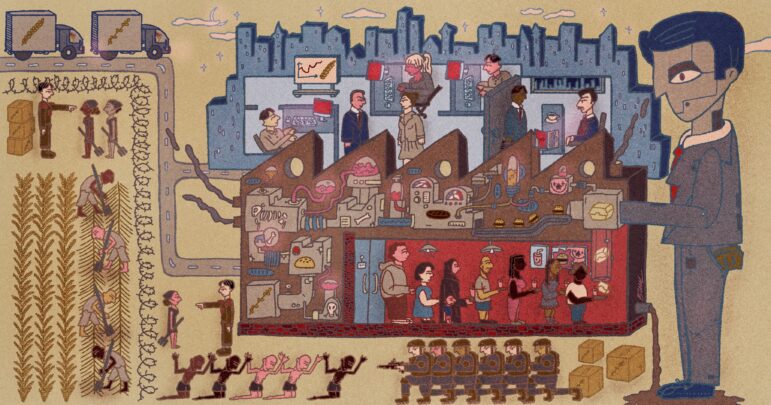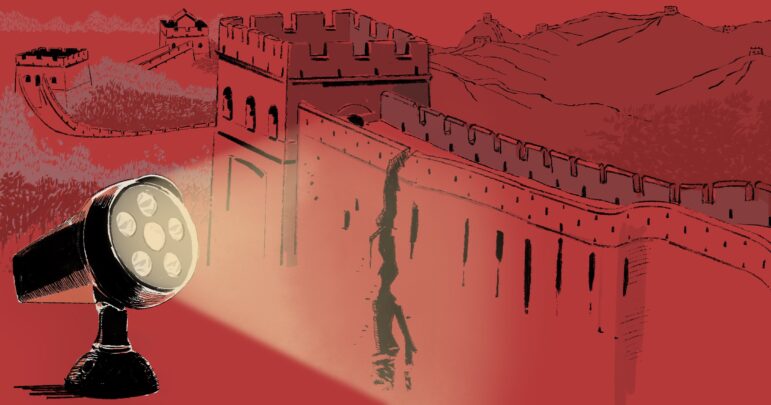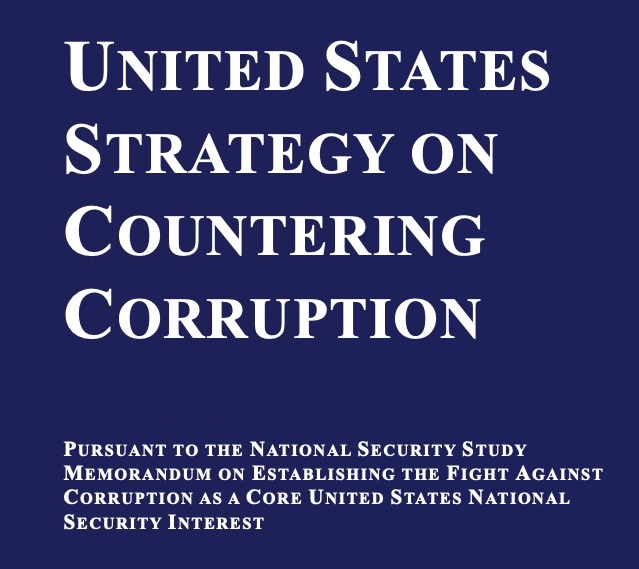

Photo: Pixabay
The 15 Most Influential Journalism Stories in US History

Photo: Pixabay
From the benefits of red wine to Westward Expansion, the lynching of African Americans to weapons of mass destruction, individual journalism stories have had an indelible impact on US culture, society, and history.
Prompted in part by an episode of the excellent podcast “On the Media,” I’ve compiled a list of the most influential news stories in US history.
Scientific? No. Highly subjective? Certainly.
It’s my take on the both the immediate and lasting impact of these individual stories, as well as the reporting and possibly panic they later yielded. It’s my own qualitative analysis. Moreover, as W. Joseph Campbell notes in his excellent book, “Getting it Wrong: Debunking the Greatest Myths in American Journalism” (2010), many major stories are mythologized precisely because the mythological version portrays the journalism profession in a positive light and plays to journalists’ own belief in the power of the press.
The list below does not represent the most significant stories — some are rather light — nor does it seek overall saturation coverage of an event or phenomenon.
I tried to link directly to the stories in all cases, but couldn’t find linkable resources for all of them; for those, I’ve linked to related summaries or analyses. Here goes:
#15. “The French Paradox,” Morley Safer, 60 Minutes, CBS News, November 17, 1991.
This is a famous report (or some might say infamous) in which Morley Safer introduced Americans to “the French Paradox”: that France’s low rate of heart disease — despite a traditional diet high in fats — might be related to how much red wine is consumed in the country. Scientific proof for Safer’s claim remains controversial, perhaps sketchy, but it was certainly a boon to the American industry. “In 1992,” according to Wine Spectator Magazine, “sales of red wine in the U.S. rose by 39 percent.”
Key line: “The answer to the riddle, the explanation of the paradox, may lie in this inviting glass.”
#14. “The Jungle,” Upton Sinclair, 1906.
“The Jungle” is the only work on this list that is a novel. But it was based on Sinclair’s seven weeks’ working undercover in Chicago meatpacking plants, an experience he also wrote about for a Socialist newspaper. “The Jungle,” however, reached a mass audience in the form of a novel, which harshly criticized the moral poverty and corruption of the rich and the harsh realities of wage laborers. Sinclair’s revelations — of brutal conditions endured by immigrant laborers and the filthy, unsanitary way in which meat was produced and packaged — came at around the same time as the Pure Food and Drug Act and the Federal Meat Inspection Act. As a result, Sinclair’s masterwork is seen as one of muckraking journalism’s most successful, and impactful, items.
Key line: “The rich people not only had all the money, they had all the chance to get more; they had all the knowledge and the power, and so the poor man was down, and he had to stay down.”
#13. “Southern Horrors: Lynch Law in All Its Phases,” Ida B. Wells, Pamphlet, 1892.
Wells was an extraordinarily gutsy journalist who followed up “Southern Horrors” with “The Red Record,” both extraordinary pamphlets that exposed in detailed fashion the cruel practice and legacy of Southern lynching of African Americans. Wells’ efforts were central to our early understanding of the mixture of hatred, greed, fear, and terror that motivated white lynching of African Americans.
Key line: “Somebody must show that the Afro-American race is more sinned against than sinning, and it seems to have fallen upon me to do so.”
#12. “Hiroshima,” John Hershey, The New Yorker, August 31, 1946.
Hershey later put his reporting together in longer form in his book “Hiroshima,” but it all began here. He tells the story of six residents of Hiroshima and how their lives were intertwined on that fateful day when the United States dropped the atomic bomb on the city. “It is a raw, very human account of the death, destruction and resilience that, all these decades later, we still witness around the world,” a writer for The Guardian later noted.
Key line: “Each of them counts many small items of chance or volition — a step taken in time, a decision to go indoors, catching one streetcar instead of the next — that spared him.”
This was merely the first of Tarbell’s groundbreaking 19-part series that redefined investigative journalism in the United States. Her reporting was eventually shifted into a full-length book, “The History of the Standard Oil Company,” which came out in 1904. (Apparently, an Amazon movie about Tarbell and Rockefeller is in the works. Stay tuned.)
Key line: “If it has taught us anything, it is that our present law-makers, as a body, are ignorant, corrupt and unprincipled; that the majority of them are, directly or indirectly, under the control of the very monopolies against whose acts we have been seeking relief.”
#10. “Nation Horrified by Murder of Chicago Youth,” Jet Magazine, September 15, 1955.
This is a somewhat peculiar entry because it is the photo, not so much the report, that was so powerful. Fifteen-year-old African-American Emmett Till was murdered by a couple of white men over an innocuous encounter with a white woman in Mississippi. While the case received a considerable amount of national coverage, none of the mainstream press would publish the photo of young Till in his coffin. The reason? Well, as part of the brutality of his killing, Till had been left in a river for days and his face was thus terribly swollen and disfigured. His mother, in an extraordinary act of courage and defiance, insisted on an open casket so that the world would see the full horror of what had befallen her son. The Chicago-based African-American magazine Jet was the only publication initially to run the photo, and helped spark a national conversation on race relations and played a major role in inspiring the Civil Rights Movement that followed.
Key line: “Let the people see what I’ve seen.”
Cronkite’s negative assessment of US efforts in Vietnam following the Tet Offensive may or may not have helped spur Lyndon B. Johnson’s decision not to seek re-election in 1968 (opinions vary). Nevertheless, the legend that “the most trusted man in America” delivered such bad news into the living rooms of Americans has gained tremendous cache over the years. Its impact, whether Johnson actually saw the report when it aired or not, is in the perception that Cronkite, and journalism more broadly, had that kind of power: to declare a war a failure.
Key line: “It seems now more certain than ever that the bloody experience of Vietnam is to end in a stalemate.”
Hersh broke the story of the March 1968 US Army massacre of civilians in My Lai, a village in South Vietnam. In fact, Hersh discovered that the Army had tried to hush up the actions of the infantry company involved and reported on the incident only after Lt. William Calley, Jr. had been court-martialed for the killings. The story, originally run by the small, anti-war agency Dispatch News Service, ran in a number of newspapers nationwide and led to a huge amount of follow-up reporting and Congressional investigations into US military action in Vietnam. Hersh later expanded his reporting in the New Yorker and elsewhere. For his efforts, he earned the 1970 Pulitzer Prize. The incident and its fallout, however, mirrored the violence and divisions that wracked the United States at the time. It helped finish off much of the lingering public support for the war and led to torturous ruminations on the purpose of US actions in Southeast Asia.
Key line: “The Army calls it murder; Calley, his counsel and others associated with the incident describe it as a case of carrying out orders.”
#7. “A Report on Senator Joseph R. McCarthy,” Edward Murrow, See It Now, CBS News, March 9, 1954.
This report by Murrow was memorably recreated — and mythologized — in George Clooney’s 2005 film “Good Night and Good Luck.” As with many of the items on this list, the influence stems as much or more from the reputation that this report has had (particularly among journalists) than the impact it had at the time. W. Joseph Campbell again goes into the problems with the myth of Murrow as a McCarthy-slayer here.
Key line: “We will not be driven by fear into an age of unreason, if we dig deep in our history and our doctrine, and remember that we are not descended from fearful men — not from men who feared to write, to speak, to associate and to defend causes that were, for the moment, unpopular.”
In 1839, popular journalist John O’Sullivan coined the term “Manifest Destiny” in this essay. Though it attracted relatively little attention at first, it soon became a sort of rallying cry in favor of Westward expansion by white Americans. The North American continent, he argued, was destined for American (white) settlement and therefore the government should encourage individuals to head west to settle the land. (This essay was published and republished, so sources may vary on the time and outlet.)
Key line: “She comes within the dear and sacred designation of Our Country … Other nations have undertaken to intrude themselves … in a spirit of hostile interference against us, for the avowed object of thwarting our policy and hampering our power, limiting our greatness and checking the fulfillment of our manifest destiny to overspread the continent allotted by Providence for the free development of our yearly multiplying millions.”
This was a tough one because of the sheer awfulness of so much major media reporting on Saddam Hussein’s supposed WMD program before the 2003 US invasion. But this story, which was later cited by Condoleezza Rice, Dick Cheney, and Colin Powell, ended up playing a critical role in the Bush administration’s justification to launch the war. This represents perhaps the greatest geopolitical blunder of the young 21st century and, subsequently, has caused a massive humanitarian crisis and hundreds of thousands, if not millions, have died as a direct and indirect result of the invasion and its aftermath. (These stories were ultimately, of course, basically debunked.)
Key line: “Iraqi defectors who once worked for the nuclear weapons establishment have told American officials that acquiring nuclear arms is again a top Iraqi priority.”
This story, stemming from one of the biggest leaks of military secrets in American history, originated in Daniel Ellsberg’s famous handover of some 7,000 pages on American involvement in Vietnam. The materials had constituted an internal report for the Pentagon commissioned under Kennedy and Johnson Defense Secretary Robert McNamara. The reports were also later published by the Washington Post (memorialized in the recent film, “The Post”) and led to a landmark Supreme Court case (New York Times Co. v. United States) that ruled in favor of the press in 1971.
Key line: “A massive study of how the United States went to war in Indochina, conducted by the Pentagon three years ago, demonstrates that four administrations progressively developed a sense of commitment to non-Communist Vietnam, a readiness to fight the North to protect the South, and an ultimate frustration with this effort — to a much greater extent than their public statements acknowledged at the time.”
You had to see this one coming, right? I guess I’m breaking my rule in that it was the cumulative effect of two years’ worth of reporting on the Watergate break-in and subsequent attempted cover-up that led to the downfall of Richard Nixon. This is the first follow-up to the original Watergate burglary story that Woodward and Bernstein collaborated on. It also draws a direct link to the Republican Party, a detail the original story did not have. And, of course, it only snowballed from there. The Washington Post ended up winning the 1973 Pulitzer Prize for investigative reporting. The reporting helped take down a president, and it rarely gets much more influential than that.
Key line: “A $25,000 cashier’s check, apparently earmarked for President Nixon’s re-election campaign, was deposited in April in a bank account of one of the five men arrested in the break-in at Democratic National Headquarters here June 17.”
An earlier version of this list did not include Farrow’s astonishing work of investigative reporting, but in retrospect I can’t see how I could have considered omitting the piece, which perhaps more than any other catalyzed the Me Too movement. To be clear, Farrow wasn’t the only one on the beat: Just days earlier, Jodi Kantor and Megan Twohey published their own extraordinary reporting, “Harvey Weinstein Paid Off Sexual Harassment Accusers for Decades,” in The New York Times. In essence, the story is that Weinstein, a powerful Hollywood mogul, has been accused by dozens of women of rape, sexual assault, abuse, and harrassment during his three-decade reign of power in the film industry. Farrow’s work gets priority here because of its depth, the way in which he elevates the first-hand accounts of Weinstein’s alleged victims, and its centrality as a cultural point of orientation. To be sure, in recognition of the way in which their work built off each other, the Pulitzer committee awarded its investigative prize jointly to Kantor, Twohey, and Farrow in 2017. The Me Too movement may just be the most significant global social movement of our present time (though, to be sure, it remains very Western-centric) and Farrow has come to be seen as a sort of journalistic avenging angel for victims of sexual abuse and harassment by the powerful.
Key lines: “For more than twenty years, Weinstein … has … been trailed by rumors of sexual harassment and assault. His behavior has been an open secret to many in Hollywood and beyond, but … [t]oo few people were willing to speak, much less allow a reporter to use their names, and Weinstein and his associates used nondisclosure agreements, payoffs, and legal threats to suppress their accounts. … Virtually all of the people I spoke with told me that they were frightened of retaliation. … Weinstein and his legal and public-relations teams have conducted a decades-long campaign to suppress these stories.”
OK, OK, I broke my rule about a “single” piece of journalism. But in terms of influential journalism, the Federalist Papers — which laid out the most open, transparent, and really only interpretation of the Constitution that the Framers ever offered in their lifetimes — are as significant as anything in American history. It is true that no single paper, or commentary, stands out as the single most influential. However, their influence — and profundity — resides in their cumulative effect.
Key line: “The subject speaks its own importance; comprehending in its consequences nothing less than the existence of the UNION, the safety and welfare of the parts of which it is composed, the fate of an empire in many respects the most interesting in the world.” —Federalist I.
Runners-up
These stories didn’t quite make the list but are still worthy of note:
“Eichmann in Jerusalem — I,” Hannah Arendt, The New Yorker, February 16, 1963.
The New Yorker published Arendt’s profound reporting and meditation on the Jerusalem trial of former Hitler henchman Adolf Eichmann after the latter’s apprehension in Argentina. The New Yorker is not exactly a general-audience publication and so its influence on the mass public might be somewhat indirect. Yet Arendt’s writing has been profoundly influential on generations of journalists and philosophers who have contemplated “the banality of evil,” in her memorable phrase.
Key line: “The sad truth is that most evil is done by people who never make up their minds to be good or evil.”
“Alcoholics Anonymous,” Jack Alexander, Saturday Evening Post, March 1, 1941.
This long read was perhaps the first major piece of journalism on the essentially unknown Alcoholics Anonymous to reach a wide audience. It has had a profound influence on the way in which American society has viewed alcoholism, how alcoholics seek treatment, and the nature of addiction. According to the Saturday Evening Post, “Alcoholics Anonymous tripled in size in the next year and continued to grow exponentially.”
Key line: “The members of Alcoholics Anonymous do not pursue or coddle a malingering prospect and they know the strange tricks of the alcoholic as a reformed swindler knows the art of bamboozling.”
“Court Martial in Iraq,” Dan Rather, 60 Minutes II, CBS News, April 27, 2004.
It had been reported on before, but it was not until the public was confronted with the appalling images of detainee torture and abuse at the Abu Ghraib prison in Iraq following the American invasion that the full severity of the case sunk in. Its impact and influence is still playing out, but it led to global condemnation, focused on US violations of international law, and raised profound questions about the nature of American power.
Key line: “Tonight, you will hear from one of those soldiers, and for the first time, you’ll see some of the pictures that led to the Army investigation. We want to warn you the pictures are difficult to look at.”
“Behind Asylum Bars,” Nellie Bly, New York World, October 9, 1887.
Bly pulled off one of the great stunts in the history of journalism when in 1887 she pretended to be insane in order to gain admittance into New York’s Bellevue Hospital, about which she would write a series of exposes for the New York World. “Behind Asylum Bars” was Bly’s first dispatch of her serialized reporting. She followed up with “Inside the Madhouse” on October 16 and all of her reporting on the mental institution ended up compiled in her book, Ten Days in a Mad-House.
Key line: “The insane asylum on Blackwell’s Island is a human rat-trap. It is easy to get in, but once there it is impossible to get out.”
Kuwaiti Incubator Story, Los Angeles Times, September 17, 1990 (and after).
Truth be told, I looked but couldn’t find the original story — which cited US officials saying that Iraqi soldiers had unhooked infants in Kuwaiti hospitals from incubators, only to let them die, which ran on September 17, 1990 — but the later follow-up linked above gives an idea. In short, this story turned out to be false and partly a result of an effective PR campaign tied to the Kuwaiti government. But it played an important role in rallying American public opinion around the cause for the US-led First Gulf War; George H.W. Bush cited it numerous times in the immediate run-up to the war as a reason for action. Alexander Cockburn of The Nation was among those who later debunked the claims (here he is in the LA Times); 60 Minutes and Morley Safer (again!) also later called foul.
Of course, this is the one of the most recent stories on this list and so perhaps for that reason its “influence,” as I define it, remains to be seen. Nevertheless, Greenwald’s scoop and the subsequent revelations of former NSA contractor Edward Snowden launched a national conversation about the surveillance state (and had plenty of international ramifications, too).
Agree/disagree? Let me know. I’m open to others.
This article first appeared on Daniel Strieff’s Medium site and is reproduced here with permission.
 Daniel Strieff is a historian, an author, and a journalist. He is a visiting fellow at the London School of Economics and a visiting lecturer at City, University of London. His specialty is 20th century American foreign relations, US Middle East policy, post-World War II American politics, the Cold War, and journalism history.
Daniel Strieff is a historian, an author, and a journalist. He is a visiting fellow at the London School of Economics and a visiting lecturer at City, University of London. His specialty is 20th century American foreign relations, US Middle East policy, post-World War II American politics, the Cold War, and journalism history.









